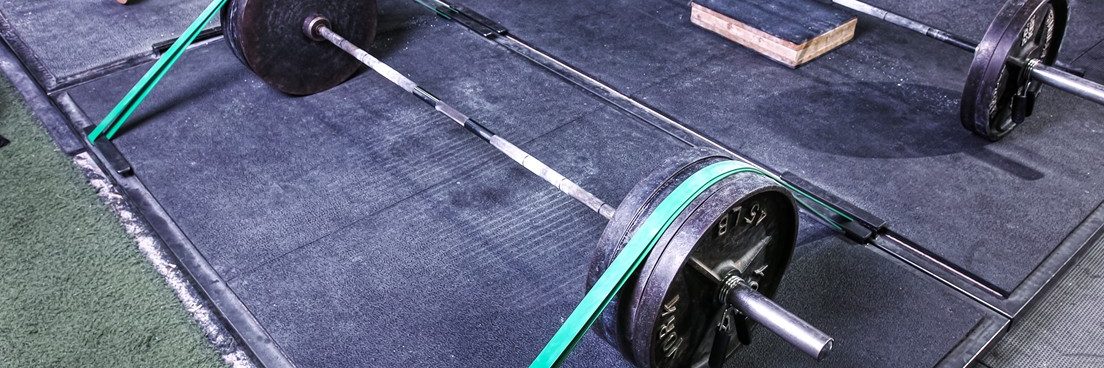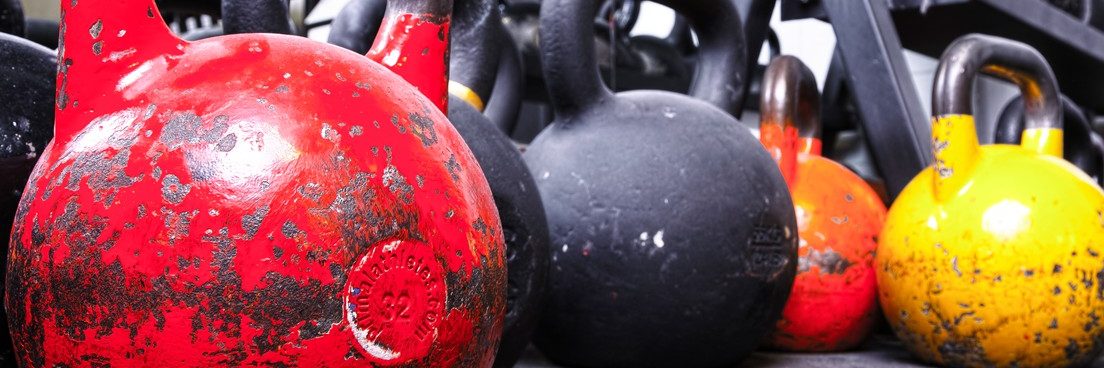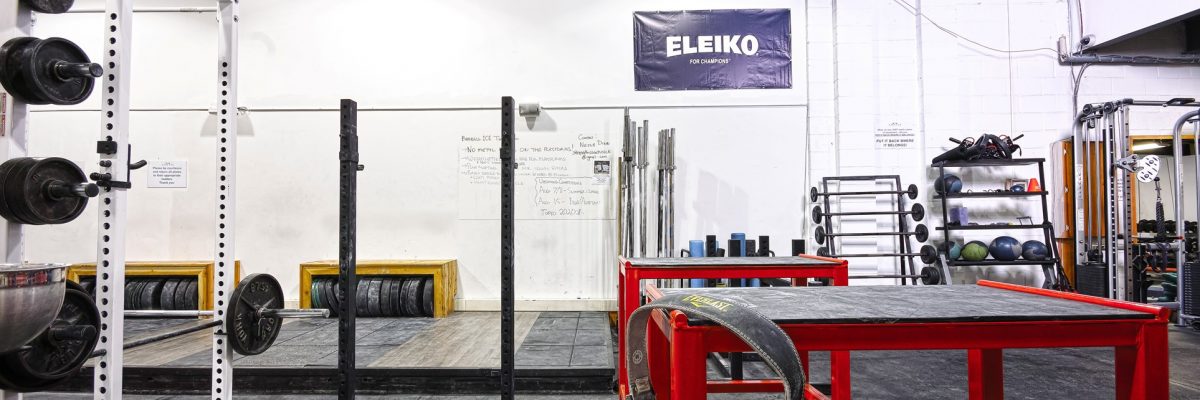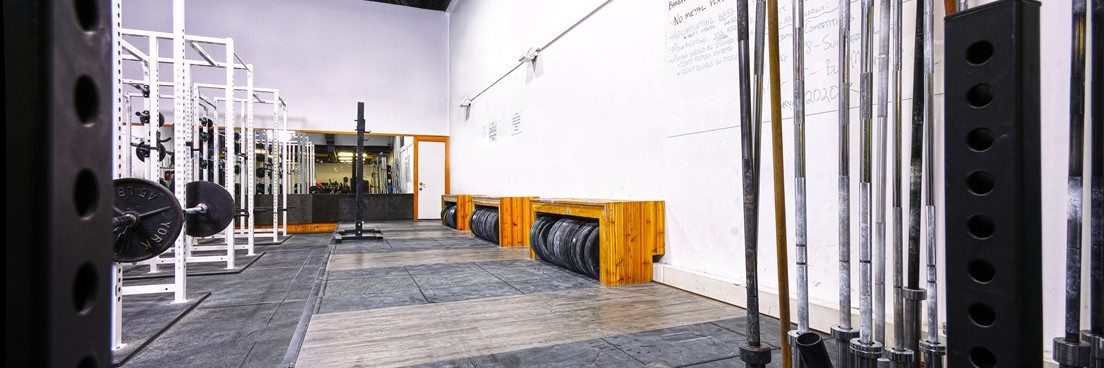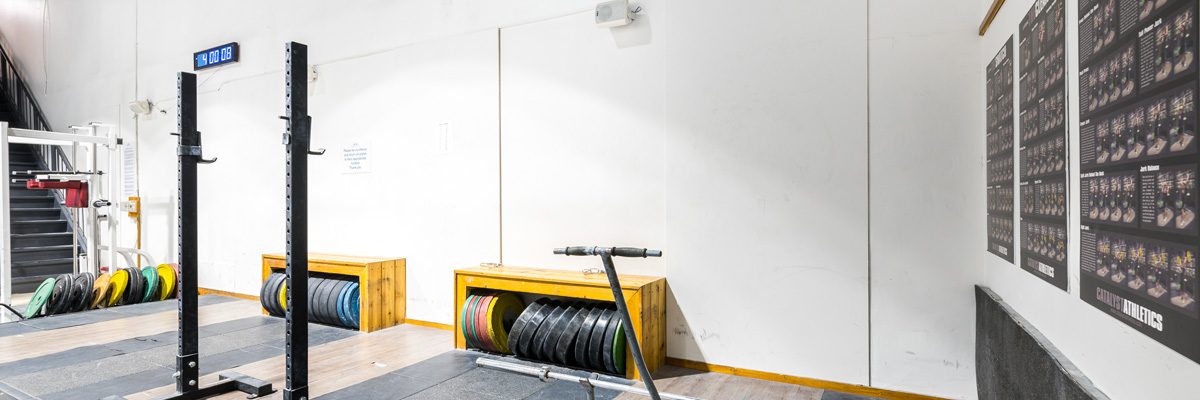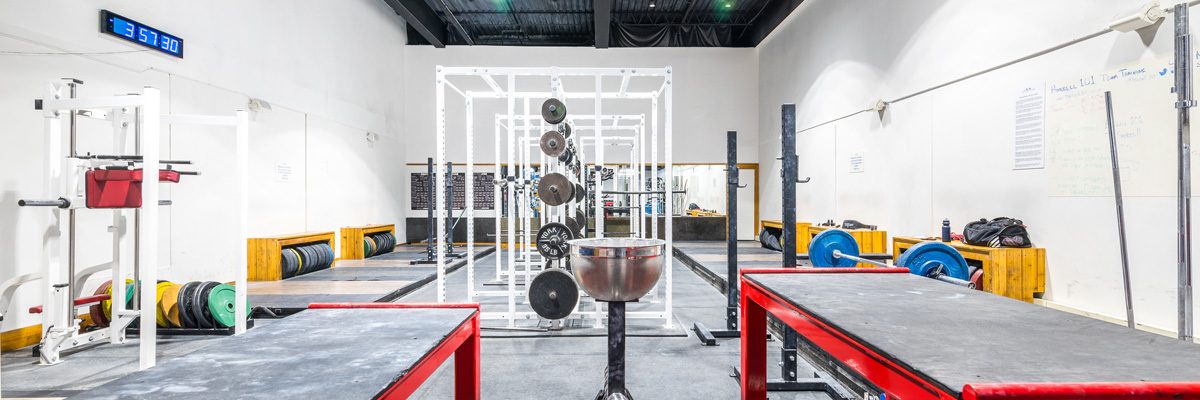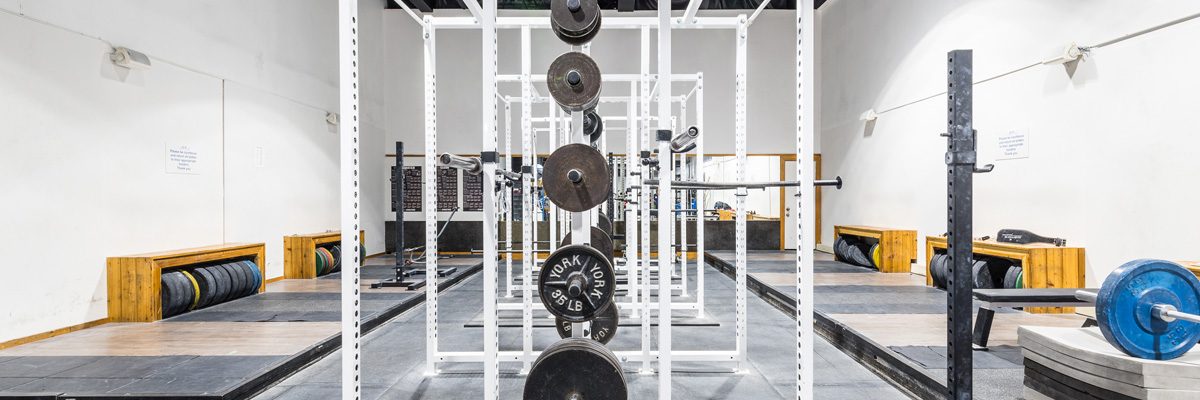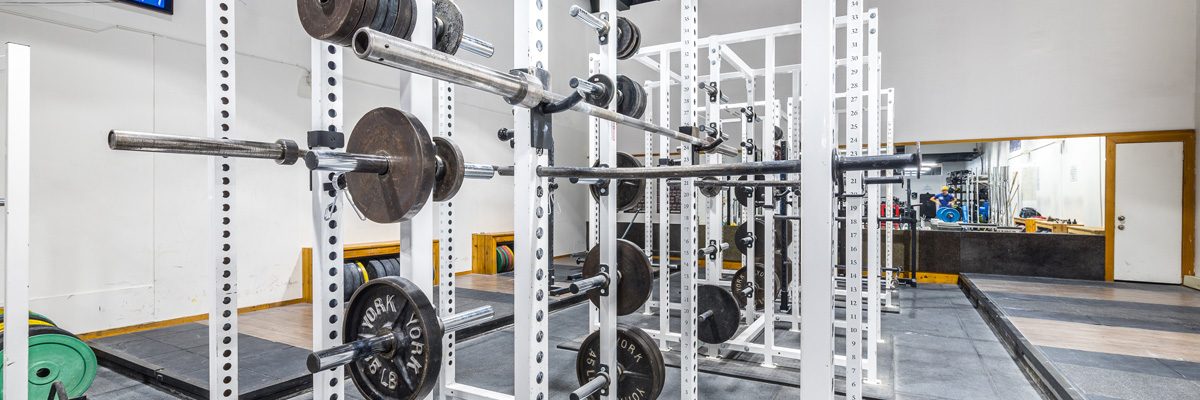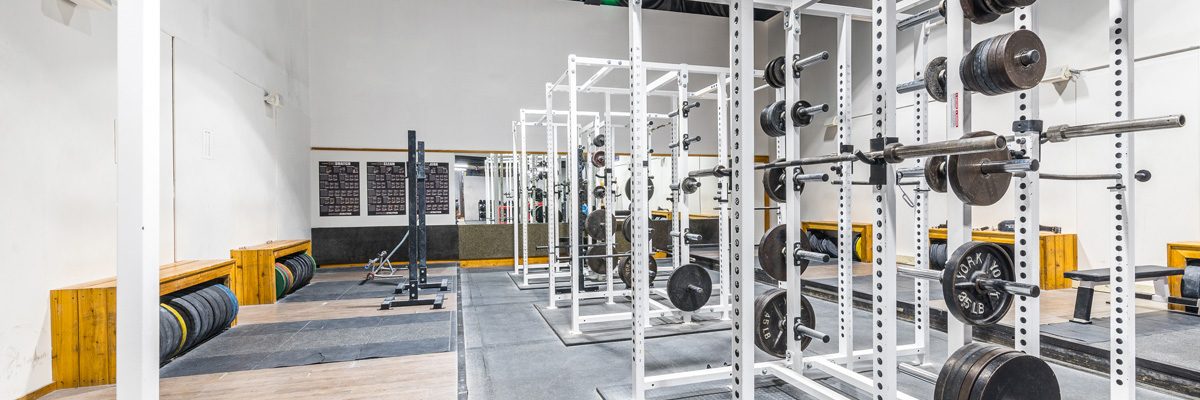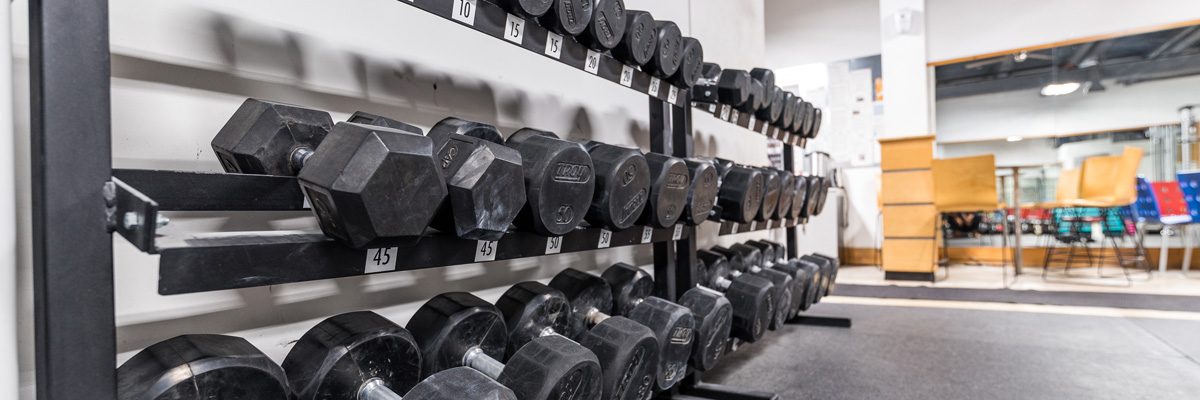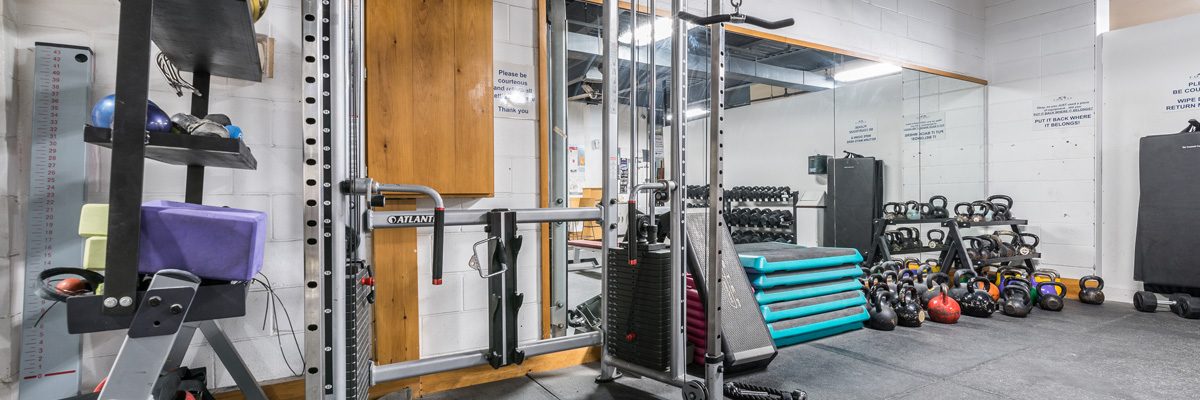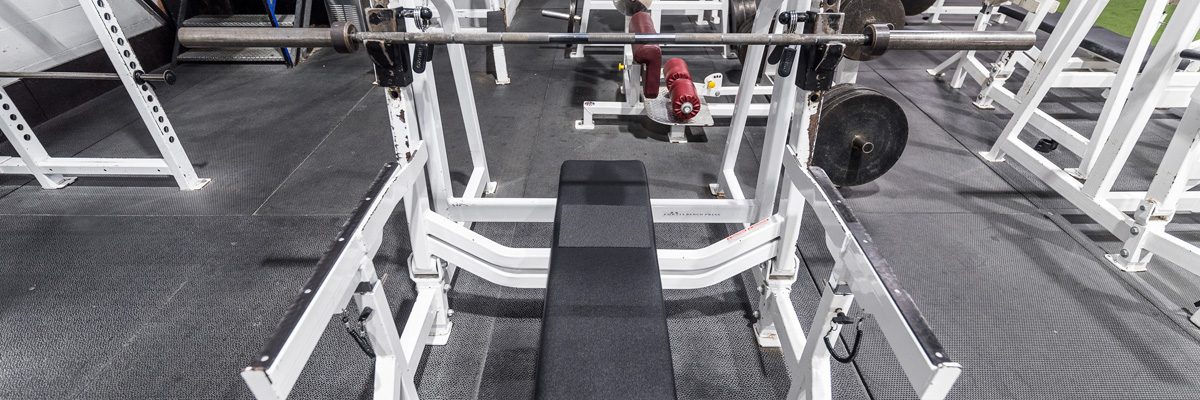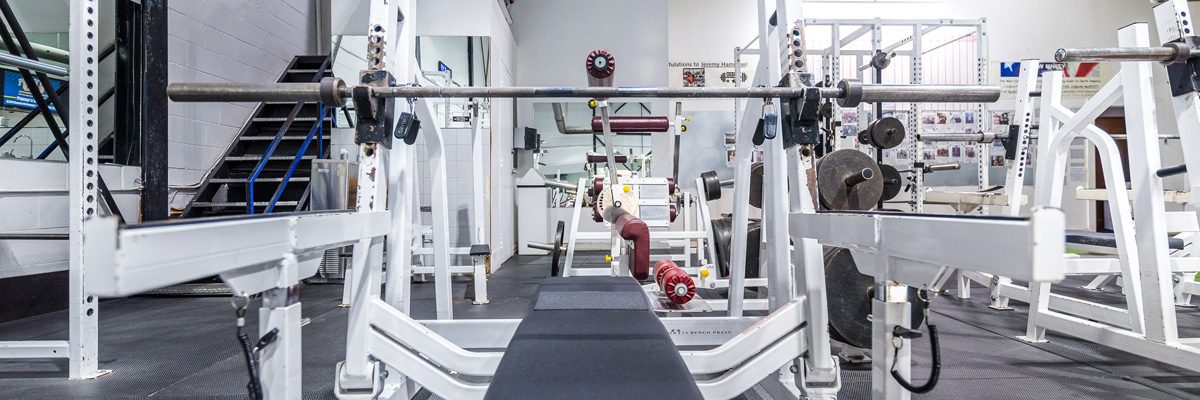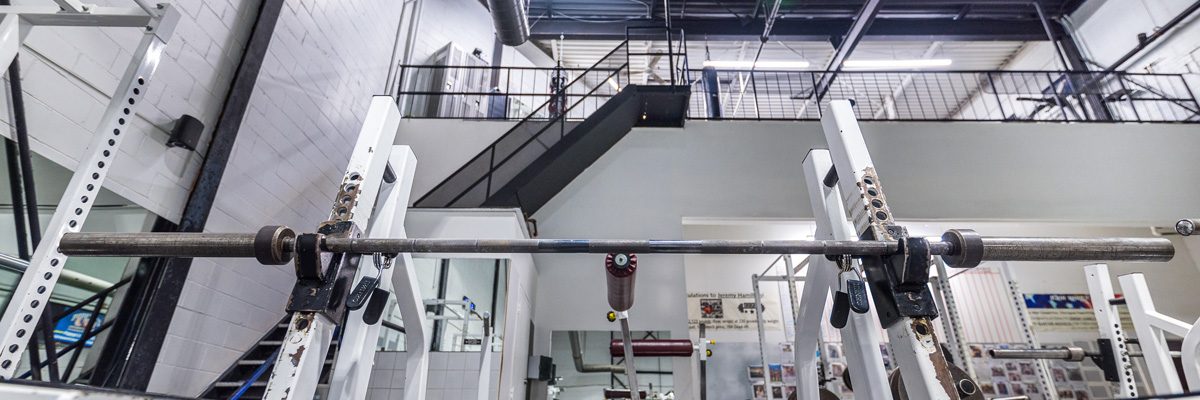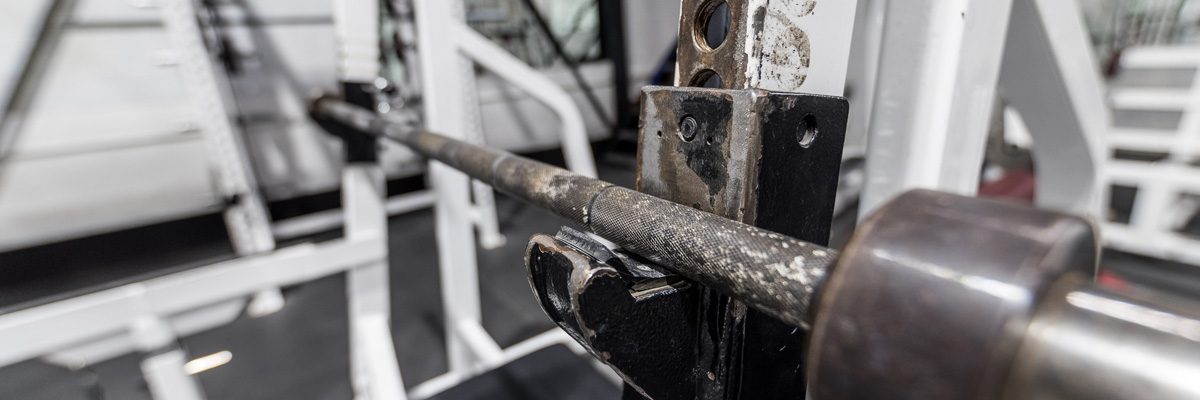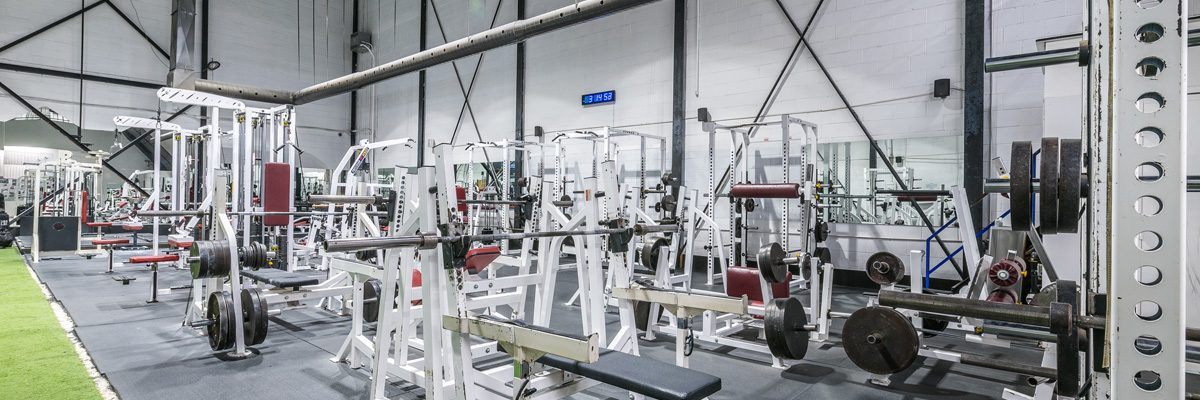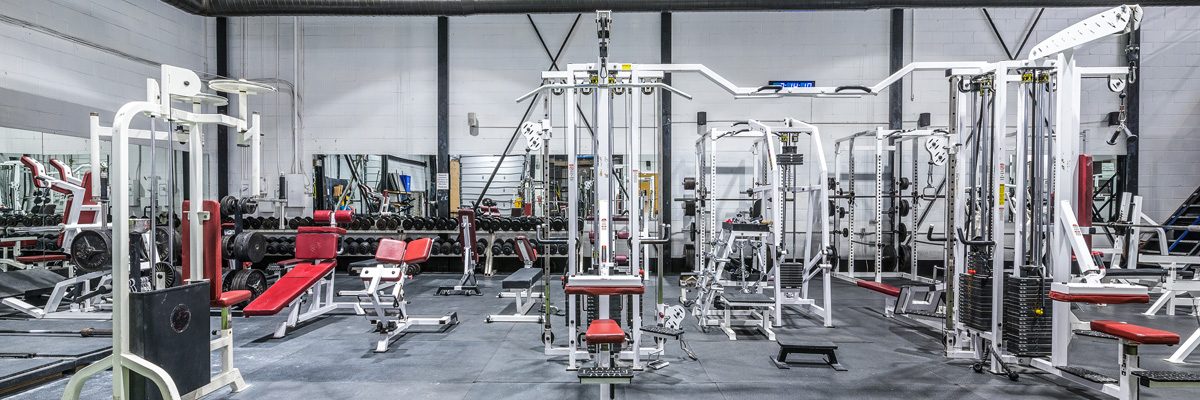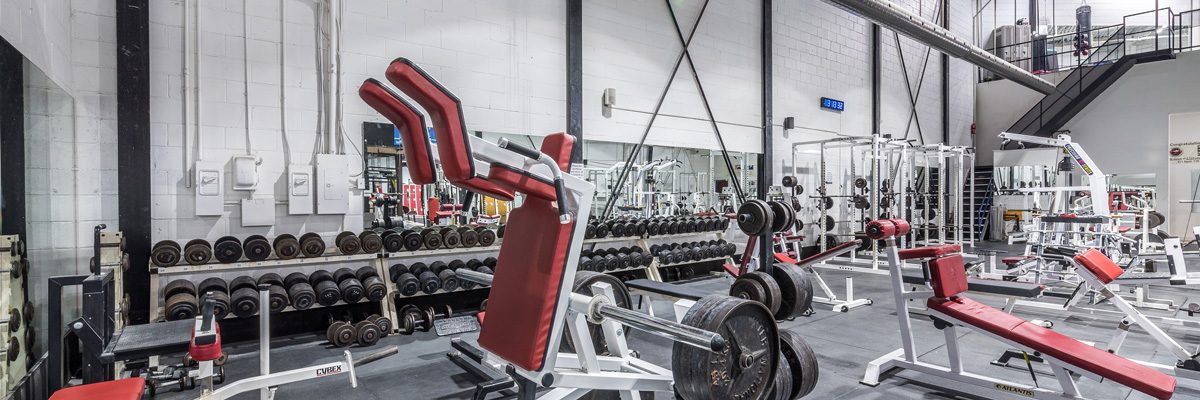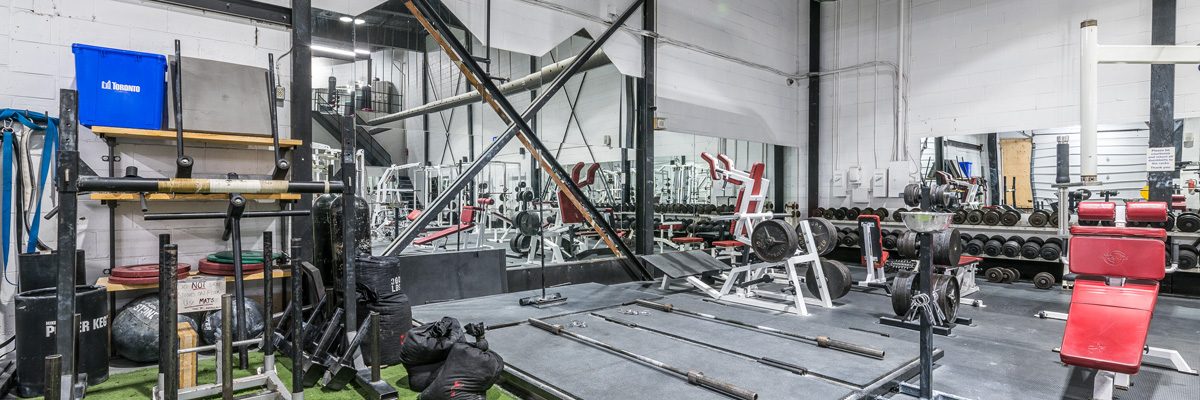Do I need to complete the full 3 part warm-up before short, special workouts?
No. It is a good idea to do part 1, involving 5 to 8 minutes of cardio to break a sweat and also part 3 which will consist of just a few light warm up sets of the first exercise you will be doing. If the exercises you will be doing are more isolating, single joint movements then just the 3rd part (dynamic) warm-up will be sufficient. This is especially true if you will be working in high repetition ranges.
Why is the repetition range given for the power clean and power snatch at 3 or less? What loads should I be using?
First, form in these exercises is shown to break down sharply after 3 repetitions. The chances of injury increase greatly when intense efforts are combined with poor form. Second, speed and power will also begin to diminish sharply with repetitions beyond three. These two full body lifts should be completed explosively with a huge emphasis on speed and power. That is why we are completing them on the lower body speed day when development of explosive power is the main goal. Finally, these lifts are extremely taxing on the central nervous system. It is for all of these reasons that the repetition range is limited to three. To make up for the lower reps, a few additional sets may be completed but only as long as explosive speed is maintained. The loads used should be limited to 70-80% of one’s estimated 1RM. If you are not able to complete these lifts with explosive power in that resistance range, then lower the load to 60% or even less. Correct technique for both of these lifts must be learned before they are included in the program.
I play a sport that will always take priority as my physical activity of choice. Nonetheless, if I want to get bigger, stronger and faster how do I fit this program into my schedule?
In this program we quickly touch on the idea of GPP or general physical preparation. Another important term is SPP or specialized physical preparation. This term basically describes any physical training related specifically to the sport you play. This would include sport-specific training, drills, practices and actually playing the sport in both competitive and non-competitive conditions. In this situation, this program will enter the realm of GPP. Any training pertaining directly to your sport will be categorized under SPP. As such, during the competitive season in which you play your sport, and the period just prior, strength training will be secondary. The workouts will be shorter, and involve mainly just the primary lifts. The number of workouts per week may fall to only 2 or 3 as described earlier. The expectations here will be to simply maintain or perhaps moderately increase strength. Following the competitive season, the strength program may be followed with a full emphasis on increasing strength and power. The idea here will be to then transfer that new and improved raw physical ability to the next competitive season in the form of even better performance in your given sport. This is a very short and cursory answer to a very complicated question. The depth of sophistication in answering this question will depend on the level of competitiveness, the experience of the athlete, the length of the season, and of course on the sport itself. For top amateur and pro athletes, the answers to this question are implicit in their expert guidance and training.
Should the primary exercises used on speed days be the same as those used on max effort days?
No, not at all. The max effort and the speed days are mutually exclusive. These days will have their own specific exercises, done for 3 weeks and then they should change. As an example, on upper body Max Effort day you could be doing bench pressing with a slight incline, off of a pin two inches above the chest, regular grip, for a 3 week wave. During the same 3 weeks, your upper body speed day primary exercise could be flat bench press, with an extra wide grip, with 1 set of 20 lb. chains.
Why does the program call for only a “box squat” and not just a regular squat on the speed lower body day? What if I don't have a box?
Box squats are exceedingly effective at improving the squat. This is because they separate the lift into its 3 primary parts – the eccentric, the concentric, and the very brief static period between the two. The Analytic–synthetic method heading explains why this can be so effective. Specifically, by resting on a box for a second we are removing the “stretch reflex” out of the bottom of the lift. As such, you will be training the muscles to get stronger without this reflex and you will build more explosive power out of the bottom of the lift. When you remove the box and add back the reflex you will be that much stronger. If you do not have a proper box, just go ahead and do a form of regular squats as fast as possible. This will certainly do the job, but not as effectively as with a box.
Are there "% of 1RM" rules for weights used with the assistance and the additional exercises?
No. Just use loads that will allow for the repetition ranges given. Constantly try to increase your repetitions (with good form) and when you reach the top of the repetition range provided, add enough additional weight such that you can only complete the lower end of the range. For example, you may start with barbell curls at 75 lbs, where you can only complete 7 repetitions with good form. Every workout, try and add a repetition or two to one or more of your sets until you work up to 10 good repetitions with 75 lbs. Add 5 pounds and start back down at 6-8 repetitions. Work back up to the high end of the rep range again and repeat this process. You will constantly be earning increases in load via increases in repetitions.
What if I want to try this program, but I don't have experience with all of the primary lifts or some of the other exercises?
This program would be much longer if it attempted to teach the reader the lifts. Further, without the aid of pictures, video instruction, and a qualified strength trainer it is unlikely that you will learn the lifts quickly or correctly. The good news is that there are a ton of excellent resources for learning the basic free-weight movements and assistance exercises. There are some great ones listed in the resources section provided. Also listed are links to directories of strength training gyms which will likely have the qualified trainers who can quickly teach you these exercises. After you take the time to master these basic exercises and make some initial gains in strength by practicing them, you may then begin this program.
What if I have flexibility issues? What if I can’t get into the required "low" position for a proper squat, my back "rounds" in the starting position of the dead-lift, or my shoulders are extremely tight when I try to touch the bar to my chest when I bench press?
You are not alone. I would say that a majority of people (including many who have experience with these exercises) do not maintain enough (if any) flexibility work. Specifically, adequate hip-lumbar and external shoulder rotation flexibility are the most common issues exhibited when people start a strength program. The good news is that these issues are quickly remedied when the correct stretches are learned and maintained. Please see the Stretch to Win link in the resources guide under “Flexibility” for exceptional pro-athletic level advice on resolving these issues.
The exercises are divided into 3 categories: primary, assistance and additional. Can I mix these exercises up when using this program?
Any exercise from the “primary” list may also be used as an “assistance” or “additional” exercise at any time in this program. Similarly, any exercise from the “assistance” exercise list may be used also as an “additional” exercise, but not as a “primary”. Finally, exercises from the “additional” list should be used only when an “additional” exercise is called for in the program. So, the 3 main categories of exercises are listed in order of their importance and versatility. This means that a “front squat” may be done as one of the higher rep “assistance” exercises in a workout, and a “sumo-deadlift” could be used as a higher repetition “additional” exercise near the end of the workout. Further, a “calf-glute-ham raise” could be used as an “additional” exercise. The use of Primary and Assistance exercises out of their original categories creates an incredible number of choices, especially given all of the possible variations outlined in the “New exercise creation matrix”.
There are a lot of exercises listed, but no guidelines as to any sequence in which to use them. Is there any order that should be followed in choosing these exercises, or should they just be tried randomly?
All of the exercises listed in each category are extremely effective. You should definitely try them all, one at a time. For example, it’s a good idea to do a form of squat for 3 weeks, then a dead-lift for the next 3 week wave, and finally a good-morning. As such, you should mix up the different primary exercises such that the same primary lift is not repeated over and over again for consecutive 3 week waves. Variations can then be added to each of these lifts as this rotation continues. Similarly, all of the assistance and additional exercises should be tried. When one exercise is exposed as being particularly difficult or requiring a much lighter load, a week point has been exposed. Extra attention can then be paid to this lift and it’s variations to bring up this weak area. This is one of the most useful benefits of constantly rotating these great exercises. For the primary exercises on Speed days, there is less flexibility. Still, change up the variations here every 3 weeks: grip, stance, resistance, bars, etc. as outlined in the “new exercise creation matrix”.
Can I stagger or overlap my 3 week waves and transitional weeks? For example, can I still be training hard in a 3 week wave on the upper body, while taking a transitional week for the lower body?
No. Keep the program simple and uniform. Work your entire body hard for the 3 week periods then rest your whole body, mind and CNS during the prescribed transitional weeks. One of the reasons for this is that most of the exercises, especially the squat and dead-lift tend to work your entire body. This is especially true when training for absolute muscular contraction as we are in this program. Also, your mind and CNS are not exercise-specific and must also get a complete rest. Just like muscles and tendons your brain and nervous system adapt to work and need sufficient recovery. Very advanced lifters have much more latitude and flexibility here. They will often modify the wave and restoration periods slightly to match their individual biorhythms. This ability though, comes only with years of advanced training and experience.
What if I want bigger arms, or wish to increase the size or strength of another body part?
The answer is in the assistance exercises and in small, special workouts. We want use only the primary exercises for lower repetition maximal efforts and speed. This will cause a pronounced, maximal anabolic hormonal response. The assistance exercise though, you can prioritize accordingly. For example, if you want bigger arms then on upper body days, after the primary exercise and triceps work you could work the biceps as “muscle priority sets” and then after complete the other upper body parts. Because you are after size (hypertrophy) you would work roughly within the 7 to 12 repetition range and keep your rests between sets under 2 minutes. You could also add an additional set, or even additional exercises for that body part. Finally, you can also add small “special” workouts for the particular body part you wish to improve. The same basic plan would hold true for any other body part you want to emphasize.
The upper body workouts have a lot of areas to cover. What if I am not able to complete everything in one single workout?
One answer is to simply split up your “Maximum effort upper body” workout day. On the first max effort upper body workout day of the week you would complete your primary exercise, followed by triceps exercises. The following day, you could complete shoulders, back and then biceps. Shoulders could go on either day, depending on your schedule and preference. This will make for shorter and more intense workouts for the body parts being trained. You can also add extra sets for those few body parts you are working. There will be little need to split up the upper body speed day. On that day, as long as the primary lift is completed with a huge emphasis on speed, do lighter and faster assistance work or simply prioritize certain body parts. Another option here is to work your upper back and lats on lower body days after you complete your legs and lower back work. This program is surprisingly flexible as long as elemental principles are being followed. Those principles include: 2 days dedicated to maximal efforts, 2 days dedicated to speed, changing the primary and other exercises regularly, explosive movements, adequate recovery, working weak points and relentless pursuit of repetition and load increases. As long as these things are being addressed then scheduling the training of some of the specific upper body parts may be individualized. Finally, short, special workouts for one or more body parts are a useful and flexible tool that may be used at any time in this program.
Can I split up my lower body days?
No. The lower body day workouts should not be split up. All of the primary lifts and almost all of the other exercises for these days involve the same muscles groups. Any form of squat or dead-lift involves the same basic muscle groups, regardless of the different variations. The same is true for most of the assistance and many of the additional exercises on these days. Still, one may do small special workouts for some specific lower body areas. This is especially true for strengthening areas like the calves, or isolating the hip abductors. These special workouts are also extremely useful for lower body restoration or flexibility.
What if I am following the program very carefully and with intensity, but I am simply not gaining strength or size?
All progress is built on a 3 part foundation: training, nutrition, and rest. The rest part is obvious; a minimum of 7-8 hours sleep per night is generally required. People often think they are eating enough healthy foods and protein but they have often not adjusted their food intake adequately for the intense gym work. Are you eating enough healthy lean protein, fruits and vegetables? Are you getting enough overall calories? Are you getting enough protein? Up to 1 gram of protein per pound of body weight per day is a good recommendation of adequate consumption when undertaking a strength training program. In addition to healthy food, a high quality protein supplement immediately following your work out is also a very good idea to ensure recovery. Make sure you are consuming the required, quality protein and enough healthy and nutritious food. Regarding gaining, maintaining, or losing body weight, the following is one example of a general guideline that will work for most men:
- Lose body weight (fat): multiply current body weight X 12 for total daily calories
- Maintain current body weight: multiply current body weight X 15 for total daily calories
- Gain body weight: multiply current body weight X 18 for total daily calories.
Again, this is only a general guideline but will help to align your nutrition with your goals. Every individual will be slightly different and should adjust these recommendations accordingly depending on the results experienced. Remember, if you want to get bigger and stronger, increases in work or intensity at the gym require corresponding increases in rest and nutrition.
What if I have a maximal effort day during the 2nd or 3rd week of a 3 week wave where I am not as strong as the previous week? What should I do if I try as hard as I possibly can, but I just don't have any strength on that day?
If this happens simply take a repetition day and follow the guidelines for your max effort day that you would during a transitional week. Pick right up where you left off the next workout. The 3 week waves and other periodization guidelines in this program are based on the documented research of literally thousands of athletes over time. Regardless, every individual will have their own optimal periods for adequate restoration. Days where you are weaker than normal can happen every now and then for a number of reasons. It may be that your previous workout was particularly intense and you simply haven’t recovered. It may be that did not get quite enough sleep or nutrition, or simply had a very stressful couple of days at work. These effects can also be cumulative over weeks or months, resulting in such an “off” day. If this happens on both of your upper and lower body maximum effort days in a given week, simply turn that week into a transitional one and then start a new wave. Your body is telling you clearly that you need the break. Don’t worry about it. Do some high repetition assistance exercises and you will come back as strong as ever the following week.
Why is there less emphasis on dead-lifting in this program, especially on speed days?
The central nervous system (CNS) is stressed more when dead-lifting than when benching or even squatting. Most lifters dead-lift too often and use too heavy a load. This will ill-affect and fatigue the CNS. The great methods used in this program involve using a variety of exercises that mimic the dead-lift or special exercises that develop the individual muscles used in the dead-lift. The advanced systems that this program is based on reveal that to get strong in the dead-lift, you shouldn’t do a lot of dead-lifting. Rather, use conjugate and assistance exercises to increase the strength of the muscle groups involved in that lift. This strategy will actually improve the dead-lift faster.
What are “Insurance exercises”?
Picture if you will a really small economy car. If we take this small car and drop in a 500 cc racing engine with huge horsepower we should have a very fast car, since the engine is huge and the car is so light and small. Yet, we will have a major problem here in that the frame of the car, the brakes, the shock absorbers, the tires, and all of the other parts of the car’s body that support this massive engine will quickly break or fall apart as soon as we hit the accelerator. Your body is no different. This program ensures building a high powered engine in that your muscles get as strong and powerful as we can make them. At the same time though, it is automatically building up and conditioning your muscle cells, tendons, ligaments, bones, nervous system, and brain. All of the other non-contractile parts of your body develop and get stronger right along with your muscles. Part of this insurance work is covered when we do high repetitions of any of the main multi-joint exercises. This work is primarily covered during transition weeks, and in the short, special workouts. It is also done after the primary exercises when we complete higher repetition assistance exercises. Regularly including unilateral exercises in your workouts will also ensure your physical infrastructure is prepared for increases in absolute strength. Special attention though must be paid to certain areas like the rotator cuff muscles of the shoulders. Rotators especially represent natural “weak links” which we must ensure stay strong to prevent injury as our large muscle groups get exceedingly strong.
Speed days seem much too easy, especially the bench pressing on upper body day. Why can't I do more of the fast repetitions?
Here is where you need to be disciplined and follow the program. The repetition ranges on speed days are proven. Enjoy the fact that you do not need to spend a long time at the gym. That’s a great part of the program. The irony here is that discipline usually involves doing more work, not less. The prescribed low repetitions per set of 2, 3 and 1 for the squat, bench press and dead-lift, respectively have been carefully arrived at by measuring decreasing bar speeds past these rep ranges at the prescribed loads. Further, believe it or not as much force is created on speed days as on max effort days. Please recall the equation: F = M x A. Doing more repetitions or sets than suggested can easily cause overtraining and halt progress. All you need to do is follow the guidelines provided to be successful.
What if I don't have access to the equipment to do all those exercises?
You do not need to do all of the assistance or additional exercises to start. Nor do you need to apply every possible variation outlined. A good rack with a decent barbell and weights, a bench and a set of dumbbells will comprise the most essential equipment. When you apply the “new exercise creation matrix” you will have tons of variations to try, even without chains, bands or some of the other stuff mentioned. If your gym doesn’t even have that basic stuff then you really need to find a new gym. Either way, please see the resources section to help you find a proper strength training gym. Even if you have access to the basics, eventually you will want to find a proper facility with all of the correct and highly effective equipment.
What about 1RM attempts?
There is no inherent danger in attempting a 1RM. As long as form is adequate and the correct movement patterns have been established by the lifter, there is little risk of injury in attempting a 1RM. If a 1RM attempt is missed, the muscles simply fail to create the required force and the weight will fall into the rack long before tears, strains or connective tissue injuries would take place. Nonetheless, this program is a robust introduction to the best methods of strength training, and so it only makes sense to firmly establish the correct movement patterns first before using more 1 RM attempts both in training and to test absolute strength. This is all in the interest of avoiding unnecessary injury.
What about forced reps, supersets and other techniques not mentioned in this program?
Forced repetitions may be used occasionally in this program but should be limited to just one or two. A rep is not yours unless you complete it by yourself. Supersets are also great to use, but for assistance and additional exercises only. The primary exercise must be done on their own. Abdominals and any other body parts may also incorporate super sets. There are many other “shock” techniques that may be used within this program as long as the vitally important methods, principles and guidelines outlined remain primary.
Do chains and bar weight make up the total load prescribed in this program?
On speed days, chain loads will be on top of the bar weight ranges prescribed on dynamic day. As such, at the bottom of the lifts the total tension should be only the bar and plate weight provided in the program guidelines. All the heavy chain should be resting on the ground in the lowest part of each lift. Conversely, on max effort day, the total tension can vary. The 90% of a 1RM or greater resistance can be a combination of bar weight and chains. Logically, most of the load should be bar weight here since a 1RM of bar weight alone will allow for added chains given the added power at the top of the lift due to an advantage in leverage.
What are the guidelines for adding chain resistance on both max effort and speed days?
On speed days, use the suggested range for the lift you are doing. On top of that, you can add approximately 10% chain weight. With experience, and if you find the bar speed is high you can add up to 25% as the upper limit on chain resistance on top of the bar weight. For Maximum effort days, you can vary the chain resistance anywhere up to 50% of the actual bar weight of your 1RM. If you are adding resistance from there, add only bar weight.
What about Olympic lifts, how would they fit into this program?
Olympic lifts such as the power clean, and power snatch are best done on the lower body speed day immediately after the primary exercises, as assistance exercises.
Must I follow the weekly 4 day schedule exactly?
One way to make the schedule a little more flexible is to change the rest periods after the max effort days. You can rest either 48 hours or 72 hours depending on your schedule and your personal recovery rate. It will not affect your success if you choose to rest either 2 full days, or 3 full days after the max effort days. Still, there should always be one full day of rest between two maximum effort days; they should never be back to back.
What if I don't have 4 days per week. Can I still do this program?
Regarding a 2 day per week program – yes, this is fine, as long as one day is max effort and 1 day is speed. Obviously this will entail full body workouts. On both days, the order of your exercises would generally look something like this: 1. Primary lower body 2. Primary upper body 3. 1 assistance lower body exercise 4. 1 triceps exercise 5. 1 upper back exercise 6. 1 shoulder or 1 biceps exercise 7. Abdominals. You would need to ensure the completion of the important “primary” and “assistance” exercises. You could then rotate shoulder and biceps exercises each workout. A 3 day per week program could also be made up of just the lower body max effort day and both a max effort day and speed day for the upper body. Lower body strength will still improve greatly from maximum effort day for the lower body. This is especially true for novices. The natural progression here would obviously be to eventually add the lower body speed day. One can never forget the importance of applying the original equation, F= M x A. Another 3 day option here would involve 2 full body days as outlined above, but minus any upper back, lats, biceps, or shoulder work. These areas could then be worked specifically on their own on a 3rd day. Realistically, this 3rd day could include or exempt any of the body parts mentioned not included in the two main speed and max effort days. This decision on which specific muscle groups to add to the 3rd day could be based on which ones are weaker and need more specific work.
I am doing everything suggested on this program. I am lifting intensely for each of the 4 days, my diet is good and I am following all of the recommendations exactly. What if my strength is remaining the same or even decreasing. What should I do?
The first thing to do is cut back lower body speed day to just the squat movement. This will mean that your workout will be under ½ hour including your warm-up. Do the same thing on your upper body speed day, and keep only your primary pressing exercise. Also on you upper body speed day, take the load from 60% of a 1RM down to 50%. If the stagnation continues, take it down to 40%. If progress continues to stagnate on lower body exercises then remove the lower body speed day all together. Finally, add a quality protein supplement to your diet. Take it right after your workouts. Make all of these changes and see what happens to your strength. Everyone is slightly different in terms of their ability to maximally contract muscles and to recover. Situations like this indicate the likelihood of an extremely high ability to contract and engage almost all of the muscle cells creating maximal intensity. This will then dictate less work should be done for recovery to take place and for strength gains to manifest. Optimal restoration will also be vital. The final answer to this predicament is to keep up the high quality rest and restoration between workouts. Finally, you can carefully add back the regular work in this program a little bit at a time. Add back the work you removed slowly and only as long as your progress is continuing.
Are you saying that circuit training and body-building routines are "wrong"?
No, not at all. Physical fitness should not be looked upon in the same way as religion or politics. Basic human physiology regarding physical improvement is dictated by science, not opinion. These two more common methods of physical training made popular by the fitness industry are simply less efficient relative to the ones prescribed here. The world’s best scientists, coaches and athletes continue to prove this again and again through science and human performance. Nonetheless, these two forms of training can certainly be useful tools, especially if one enjoys them or is competing in body-building or some form of circuit training event.
Some of the strongest people in the world are also very large, with what seems like lots of excess body fat. NFL linemen and power lifters come to mind. Will a strength program really help me lose fat?
Absolutely. Fat loss is made up of 3 components. Diet, exercise and building muscle. You must have your diet under control to lose body fat permanently. You must be at a caloric deficit or at least equilibrium. Then, any form of physical exercise will burn off your existing body fat. We already covered how building muscle contributes so effectively to fat loss in this program. The giant strength athletes you see are usually the super heavy weights who get the most media attention because they lift the greatest amounts of weight. Increased body weight is just another advantage for these massive lifters, NFL linemen, strongmen, and others. On the other hand, athletes in lower weight classes are typically very lean because they need to make their respective weight limits. For a complete answer on the maximizing fat loss via diet, exercise and muscle please refer to www.eco-diet.com
What about belts, chalk & other equipment?
This program assumes that the reader has a basic understanding of belts and chalk. For more information on the simple use of these effective tools please refer to our resource section. Belts and chalk are very useful especially as loads get heavier and lifters become more experienced. Additional equipment though is neither required nor recommended, especially for beginners.
I am a non-athletic middle aged person and I just want to lose some fat and tone up. Why should I care about "special strengths", Newtonian physics, and elite human performance? I am sure it’s great information, but do I really need any of this stuff?
For anyone simply looking to lose some fat and “tone-up”, combined with a responsible diet, this program will get you there faster and with more permanence than the more common fitness alternatives. Please consider all of the other performance benefits, stronger bones and connective tissue, youthful hormones, and functional muscle, etc. as bonuses. In our battle to get lean and look better, people are generally failing miserably. In fighting this battle, I would compare contemporary methods generally offered to the public to “pea shooters”. I would confidently describe advanced athletic strength training as a “machine gun”. This program will actually provide you with final victory. Also, for those of us who are middle aged, remember that the real benefits of engaging in a uniquely effective program like this are longer term. That is, we will appreciate the results of this type of training the most when we are in our 60’s, 70’s and beyond – still functional, vital, healthy, and strong. Trust me; the value of these gifts will be immeasurable.




